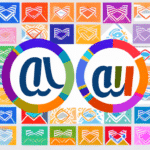A Comprehensive Guide to Getting Noticed in Your Customers' Inboxes
Email marketing has long been a popular and effective method for businesses to reach out to their customers. However, with the average person receiving over 121 emails per day (Source), the challenge is how to make your message stand out in your customers' inboxes. In this comprehensive guide, we will explore why getting noticed in your customers' inboxes is crucial, the strategies you need to implement to achieve this, and methods to measure your success.
Why Getting Noticed in Your Customers' Inboxes is Crucial for Your Business
Standing out in your customers' inboxes is essential for building and maintaining a strong relationship with them. Effective email marketing can help you:
- Build Trust: Consistent and relevant communication fosters trust.
- Increase Engagement: Engaged customers are more likely to interact with your content.
- Drive Sales: Targeted emails can lead to higher conversion rates.
With an average ROI of $42 for every $1 spent (Source), email marketing remains one of the most cost-effective strategies for reaching out to your audience. However, the sheer volume of daily emails necessitates that your messages are both compelling and targeted.
To ensure your email stands out, focus on the following:
- Personalization: Customize emails to address individual customer preferences.
- Segmentation: Divide your email list based on demographics, behavior, or purchase history.
- Timing: Send emails when your audience is most likely to engage.
Personalized emails have been shown to achieve 29% higher open rates and 41% higher click-through rates compared to generic emails (Source). By using customer names and tailoring content to their interests, you can significantly enhance engagement.
The Importance of Crafting a Compelling Email Subject Line
The subject line is your first chance to make a good impression and encourage your customers to open your email. It needs to be concise, attention-grabbing, and relevant. Consider the following strategies:
- Use Personalization: Incorporate the recipient's name or preferences.
- Employ Power Words: Words like "Exclusive," "Limited Time," or "Unlock" can drive curiosity.
- Maintain Relevance: Ensure the subject reflects the email's content.
Research indicates that subject lines under 50 characters perform better on mobile devices (Source). Additionally, avoiding spammy words and being honest about the email's content prevents your messages from being marked as spam.
Implement A/B testing to determine which subject lines resonate best with your audience. Tools like ShipScience A/B Testing can help you analyze open rates and engagement to refine your approach.
How to Personalize Your Emails for Higher Open Rates
Personalization goes beyond addressing a customer by name. It involves tailoring content based on their behaviors, preferences, and past interactions. Here’s how to effectively personalize your emails:
- Use Customer Data: Leverage data from previous purchases, browsing history, and interactions to customize content.
- Segment Your Audience: Create segments based on demographics, interests, and purchase behavior to send targeted messages.
- Dynamic Content: Incorporate content that changes based on the recipient’s data, such as product recommendations.
For instance, if a customer frequently purchases a particular category of products, you can highlight similar or complementary items in your emails. Personalized recommendations can lead to a 760% increase in email revenue (Source).
Timing also plays a critical role. Sending emails triggered by specific actions, like cart abandonment or browsing a particular category, can significantly boost open and conversion rates.
Tips for Writing Engaging Email Content That Keeps Your Subscribers Hooked
The content of your email is crucial in maintaining subscriber interest and driving action. Follow these best practices to create engaging content:
- Clear and Concise: Use straightforward language and keep your messages brief.
- Visual Elements: Incorporate images, videos, and infographics to support your message.
- Value Proposition: Provide actionable advice, exclusive offers, or valuable information.
- Call-to-Action (CTA): Include strong and clear CTAs to guide subscribers towards desired actions.
Using A/B testing for different content formats and styles can help identify what resonates most with your audience. For example, interactive content like polls or quizzes can increase engagement by up to 25% (Source).
The Role of Frequency in Email Marketing: How Often Should You Send Emails?
Finding the right email frequency is vital to maintaining subscriber engagement without causing fatigue. Here are some considerations:
- Audience Preferences: Understand how often your audience wants to hear from you through surveys or feedback.
- Content Quality: Ensure that each email provides value to justify its frequency.
- Consistent Schedule: Maintain a regular sending schedule to keep your brand top-of-mind.
Studies show that sending 1-2 emails per week is optimal for most businesses, balancing visibility and avoiding oversaturation (Source). Monitor key metrics like open rates, click-through rates, and unsubscribe rates to adjust your frequency accordingly.
Strategies for Growing Your Email List and Expanding Your Reach
Expanding your email list is essential for reaching more potential customers and driving business growth. Implement these strategies to grow your list:
- Lead Magnets: Offer valuable resources like eBooks, webinars, or exclusive discounts in exchange for email sign-ups.
- Contests and Giveaways: Encourage participation by offering incentives for subscribing.
- Referral Programs: Reward current subscribers for referring new users to your list.
- Optimized Sign-Up Forms: Ensure your forms are mobile-friendly and include clear calls-to-action.
Utilizing multiple channels such as social media, paid advertising, and guest blogging can attract a diverse audience to your email list. Additionally, provide clear value propositions on your landing pages to persuade visitors to subscribe.
Best Practices for Designing and Optimizing Mobile-Friendly Emails
With more than half of all emails being opened on mobile devices (source), designing mobile-friendly emails is imperative. Follow these best practices:
- Responsive Design: Ensure your email layout adapts to various screen sizes and orientations.
- Simple Layout: Use a single-column design for easier navigation on mobile devices.
- Optimized Images: Compress images to reduce loading times without sacrificing quality.
- Readable Fonts: Use larger font sizes and clear typography for better readability.
- Clickable Buttons: Make CTAs easily tappable with sufficient spacing.
Always test your emails on multiple devices and email clients to ensure consistent appearance and functionality. Tools like ShipScience Email Testing can help identify and fix design issues before sending.
How to Measure the Success of Your Email Marketing Campaigns
Measuring the effectiveness of your email campaigns is crucial for optimizing performance and achieving a high return on investment. Key metrics to track include:
- Open Rates: The percentage of recipients who open your email.
- Click-Through Rates (CTR): The percentage of recipients who click on links within your email.
- Conversion Rates: The percentage of recipients who complete a desired action, such as making a purchase.
- Return on Investment (ROI): The overall profitability of your email campaigns.
- Unsubscribe Rates: The percentage of recipients who opt out of your email list.
Utilize A/B testing to experiment with different elements of your emails, such as subject lines, content, and CTAs, to determine what drives the best results. Additionally, segmenting your audience and personalizing your content can lead to more accurate and insightful metrics.
Implementing analytics tools like ShipScience Email Analytics can provide detailed reports and visualizations to track your campaign performance effectively.
Common Mistakes to Avoid When Emailing Your Customers
Avoiding common pitfalls in email marketing can save you from potential setbacks and maintain your brand’s reputation. Key mistakes include:
- Using Outdated or Spammy Tactics: Avoid practices like sending unsolicited emails or using deceptive subject lines.
- Irrelevant or Excessive Messaging: Ensure your content is relevant and maintain a balanced sending frequency.
- Generic Content: Personalized and tailored content performs better than generic messages.
- Neglecting Mobile Optimization: Failing to design for mobile can result in poor user experience.
- Ignoring GDPR and Privacy Regulations: Ensure compliance to avoid legal issues and maintain trust.
By focusing on relevance, personalization, and compliance, you can enhance the effectiveness of your email campaigns and foster a positive relationship with your audience.
Leveraging Automation and Segmentation to Boost Your Email Marketing Efforts
Automation and segmentation are powerful tools that can enhance the efficiency and effectiveness of your email marketing campaigns. Here’s how to leverage them:
- Email Automation: Use automated workflows to send timely and relevant messages based on user actions, such as welcome emails, abandoned cart reminders, or re-engagement campaigns.
- Segmentation: Divide your email list into segments based on criteria like demographics, purchase history, or engagement levels to send more targeted and personalized emails.
Implementing automation can save time and ensure consistency, while segmentation allows for more precise targeting, leading to higher open and conversion rates. Tools like ShipScience Email Automation offer robust features to create and manage automated campaigns effectively.
Combining automation with segmentation can result in a 300% increase in email engagement (Source), making it a critical component of a successful email marketing strategy.
Case Studies: Examples of Successful Email Marketing Campaigns
Learning from successful email marketing campaigns can provide valuable insights and inspiration for your own strategies. Here are a few examples:
- Company A: Increased their open rates by 25% through personalized subject lines and targeted content.
- Company B: Achieved a 40% conversion rate by implementing automated abandoned cart emails with exclusive discounts.
- Company C: Boosted their ROI by 150% by segmenting their email list and tailoring content to different customer groups.
By analyzing these case studies, you can identify effective strategies and adapt them to suit your business needs. Implementing similar tactics can help you achieve comparable success in your email marketing endeavors.
Staying Compliant with GDPR and Other Privacy Regulations in Email Marketing
Compliance with data protection regulations like the General Data Protection Regulation (GDPR) is essential in email marketing to protect customer data and maintain trust. Key compliance practices include:
- Obtaining Consent: Ensure that you have explicit permission to send emails to your subscribers.
- Providing Opt-Out Options: Make it easy for users to unsubscribe or modify their email preferences.
- Data Security: Protect customer data through secure storage and handling practices.
- Transparency: Clearly communicate your data collection and usage policies in your privacy policy.
Implementing a double opt-in process can help verify subscriptions and reduce the risk of fake or invalid email addresses (Source). Additionally, regularly reviewing and updating your privacy policies ensures ongoing compliance with evolving regulations.
Non-compliance can result in significant fines and damage to your brand’s reputation, making it imperative to prioritize data privacy in your email marketing strategies.
The Future of Email Marketing: Trends to Watch Out For
Email marketing is continuously evolving, with new trends and technologies shaping its future. Key trends to watch include:
- Interactive and Dynamic Emails: Incorporating elements like surveys, quizzes, and interactive product showcases to engage users directly within the email.
- AI and Machine Learning: Utilizing AI to personalize content, predict customer behavior, and optimize sending times.
- Mobile Wallets and Loyalty Programs: Integrating mobile wallet features and loyalty rewards to enhance customer engagement and retention.
- Enhanced Personalization: Moving beyond basic personalization to include more sophisticated and context-aware content.
Staying ahead of these trends by experimenting with new technologies and adapting your strategies will ensure that your email marketing efforts remain effective and relevant. Embracing innovation can lead to increased engagement, higher conversion rates, and sustained business growth.
In conclusion, getting noticed in your customers' inboxes is crucial for the success of your email marketing campaigns. By following the best practices and strategies outlined in this comprehensive guide, you can improve your performance, engage your customers, and grow your business. Remember to continuously test, measure, and optimize your campaigns to stay relevant and effective in the fast-paced world of email marketing.




















